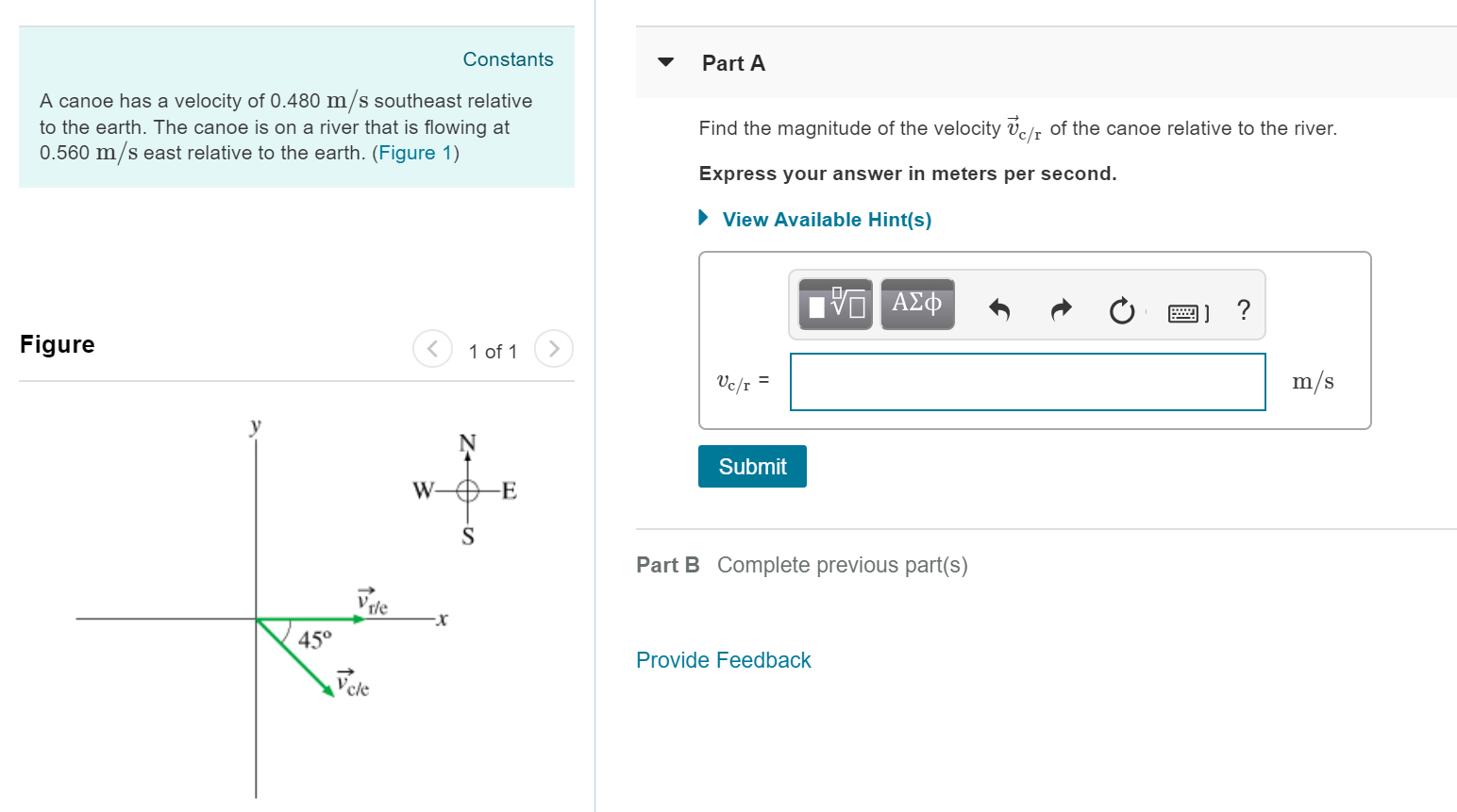Constants Part A A canoe has a velocity of 0.480 m/s southeast relative to the earth. The canoe is on a river that is flowing at 0.560 m/s east relative to the earth. (Figure 1) Find the magnitude of the velocity vc/r of the canoe relative to the river. Express your answer in meters per second. View Available Hint(s) Figure 0) m/s c/r Submit Part B Complete previous part(s) rle 45° Provide Feedback
Constants Part A A canoe has a velocity of 0.480 m/s southeast relative to the earth. The canoe is on a river that is flowing at 0.560 m/s east relative to the earth. (Figure 1) Find the magnitude of the velocity vc/r of the canoe relative to the river. Express your answer in meters per second. View Available Hint(s) Figure 0) m/s c/r Submit Part B Complete previous part(s) rle 45° Provide Feedback
Principles of Physics: A Calculus-Based Text
5th Edition
ISBN:9781133104261
Author:Raymond A. Serway, John W. Jewett
Publisher:Raymond A. Serway, John W. Jewett
Chapter3: Motion In Two Dimensions
Section: Chapter Questions
Problem 4CQ
Related questions
Question

Transcribed Image Text:Constants
Part A
A canoe has a velocity of 0.480 m/s southeast relative
to the earth. The canoe is on a river that is flowing at
0.560 m/s east relative to the earth. (Figure 1)
Find the magnitude of the velocity vc/r of the canoe relative to the river.
Express your answer in meters per second.
View Available Hint(s)
Figure
0)
m/s
c/r
Submit
Part B Complete previous part(s)
rle
45°
Provide Feedback
Expert Solution
This question has been solved!
Explore an expertly crafted, step-by-step solution for a thorough understanding of key concepts.
This is a popular solution!
Trending now
This is a popular solution!
Step by step
Solved in 3 steps with 2 images

Recommended textbooks for you

Principles of Physics: A Calculus-Based Text
Physics
ISBN:
9781133104261
Author:
Raymond A. Serway, John W. Jewett
Publisher:
Cengage Learning

College Physics
Physics
ISBN:
9781938168000
Author:
Paul Peter Urone, Roger Hinrichs
Publisher:
OpenStax College

Glencoe Physics: Principles and Problems, Student…
Physics
ISBN:
9780078807213
Author:
Paul W. Zitzewitz
Publisher:
Glencoe/McGraw-Hill

Principles of Physics: A Calculus-Based Text
Physics
ISBN:
9781133104261
Author:
Raymond A. Serway, John W. Jewett
Publisher:
Cengage Learning

College Physics
Physics
ISBN:
9781938168000
Author:
Paul Peter Urone, Roger Hinrichs
Publisher:
OpenStax College

Glencoe Physics: Principles and Problems, Student…
Physics
ISBN:
9780078807213
Author:
Paul W. Zitzewitz
Publisher:
Glencoe/McGraw-Hill